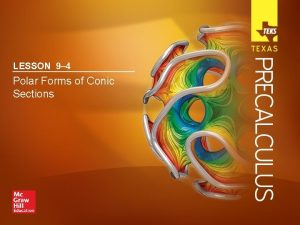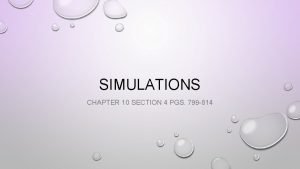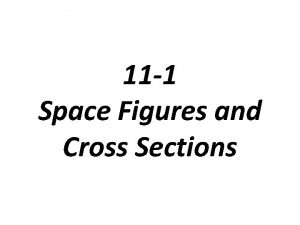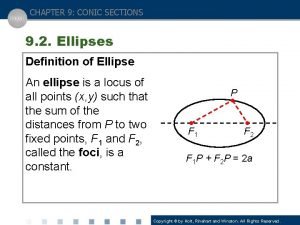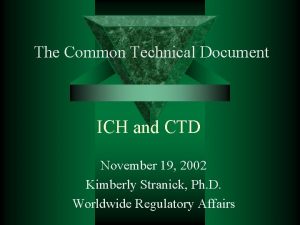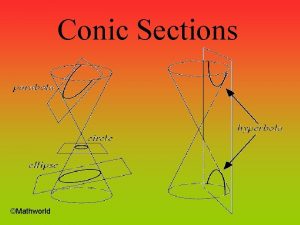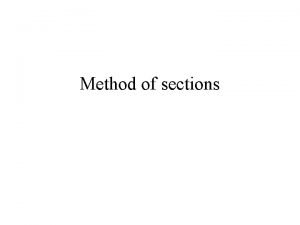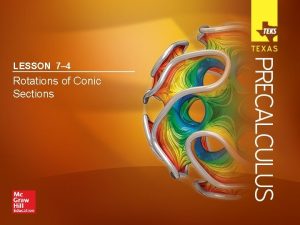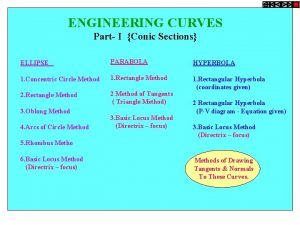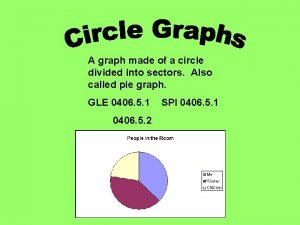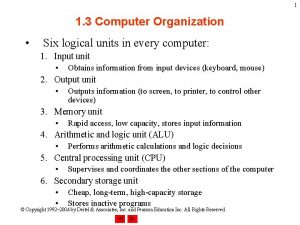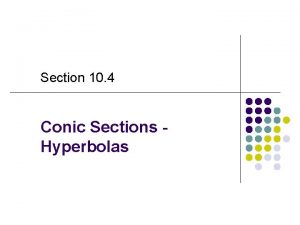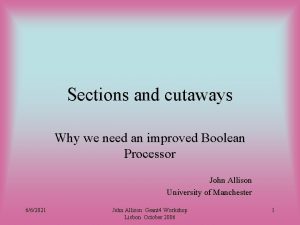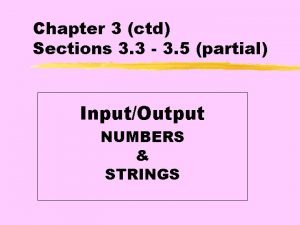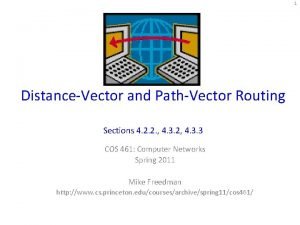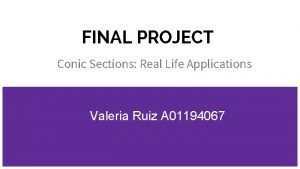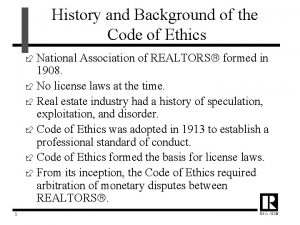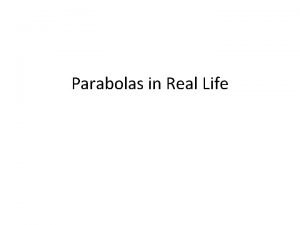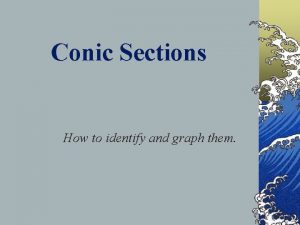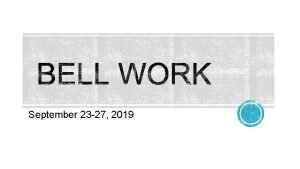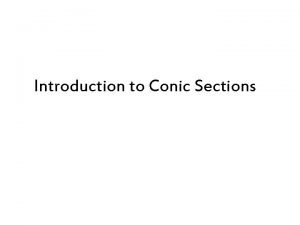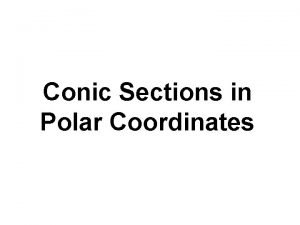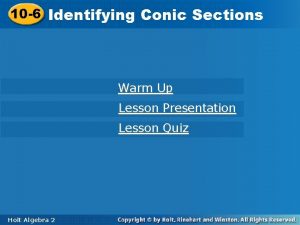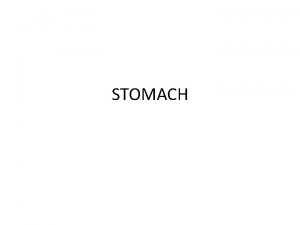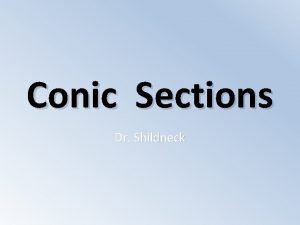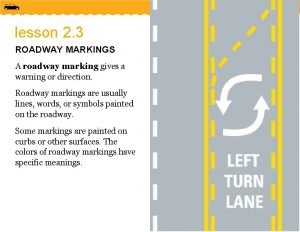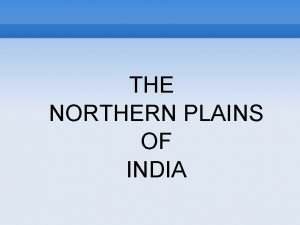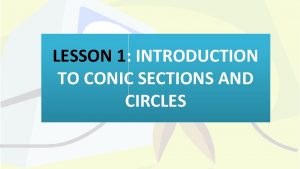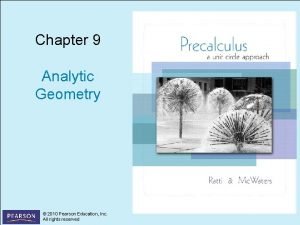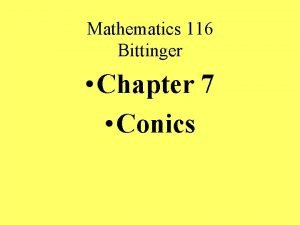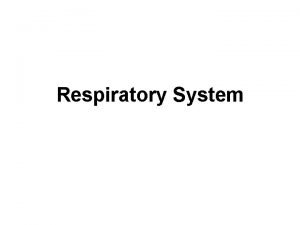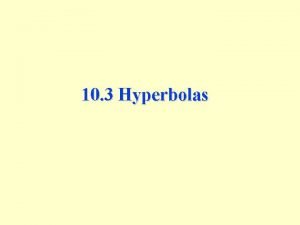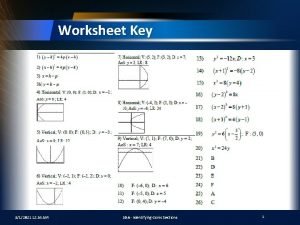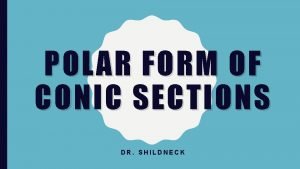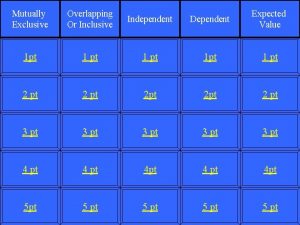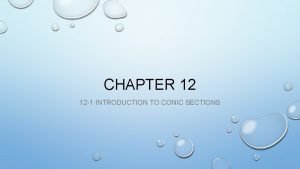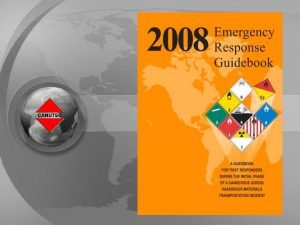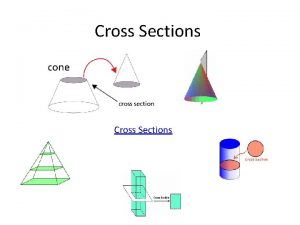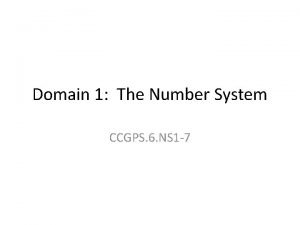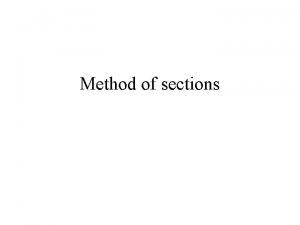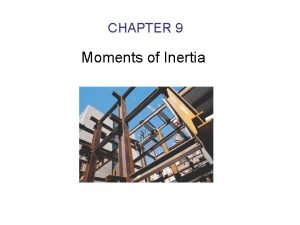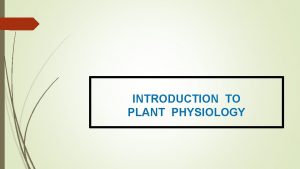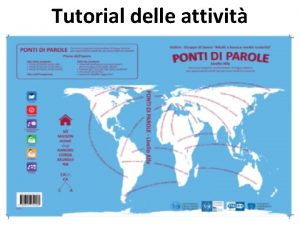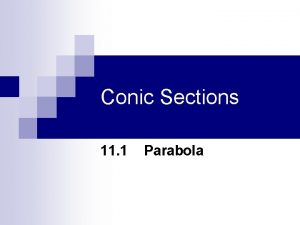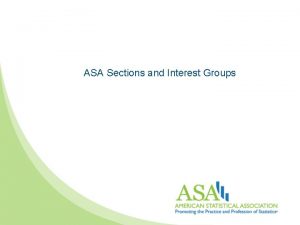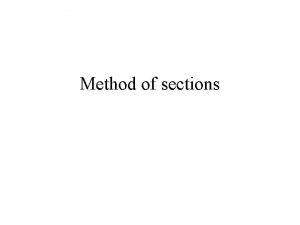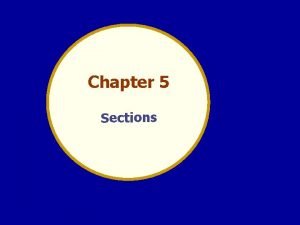Tutorial 14 Sections 009010 TA Greydon Gilmore Physiology





































![Renal Handling Example: Urea • Filtered Load of Urea = [Urea]plasma x GFR = Renal Handling Example: Urea • Filtered Load of Urea = [Urea]plasma x GFR =](https://slidetodoc.com/presentation_image_h/22a4517e1dfa8a054cfc838a9d6cba12/image-38.jpg)
























- Slides: 62


Tutorial 14 Sections 009/010 TA: Greydon Gilmore Physiology 2130 Jan 21 st, 2020

Your TA reminding you… • 3 rd Peerwise assignment (1. 5%) • Post 2 MC questions: due Feb 12 th @ midnight • Answer 5 MC questions: due Feb 14 th @ midnight • 3 rd Quiz (1%) • Opens: Feb 24 th @ 4 pm • Closes: Feb 25 th @ 4 pm • 3 rd Midterm (15%) • When: Feb 28 th @ 6 pm-7 pm

Midterm #2 Results • 17 students with 100%

Today • Group work activities • Learning Catalytics Question • Renal Physiology

Group Work

Sandra has been referred to a nephrology clinic due to the pain she has been experiencing in her lower back, which may be related to a problem with her kidneys. The following is her blood work and urinalysis results: [Sodium]plasma = 8 mg/L [Sodium]urine = 10 mg/L [Potassium]plasma = 2 mg/L [Potassium]urine = 12 mg/L [Creatinine]plasma = 2 mg/L [Creatinine]urine = 120 mg/L [Glucose]plasma = 15 mg/L [Glucose]urine = 0 mg/L [Magnesium]plasma = 20 mg/L [Magnesium]urine = 15 mg/L Urine volume = 2. 5 L/day 1. 2. 3. 4. 5. Calculate Sandra’s GFR. What is the filtered load of sodium? What is the filtered load of glucose? What is the filtered load of magnesium? What is the renal handling for potassium?

Calculate the net filtration pressure if the forces are determined as the following: Hydrostatic pressure of Bowman’s capsule = 35 mm. Hg Hydrostatic pressure of Glomerular capillaries = 60 mm. Hg Colloid osmotic pressure of Bowman’s capsule = 5 mm. Hg Colloid osmotic pressure of Glomerular capillaries = 25 mm. Hg Based on the calculation you have made, knowing that normal net filtration pressure is 10 mm. Hg, is this person filtering a normal volume, less or more volume of fluid per day?

Think of and discuss analogies that could help to understand renal physiology. • ie. symporters are like Ferris wheels when the passengers get on, the Ferris wheel turns. • post the analogy to Learning catalytics

Learning Catalytic Question

Sandra has been referred to a nephrology clinic due to the pain she has been experiencing in her lower back, which may be related to a problem with her kidneys. The following is her blood work and urinalysis results (Page 259):

Calculate the net filtration pressure if the forces are determined as the following: • Based on the calculation you have made, knowing that normal net filtration pressure is 10 mm. Hg, is this person filtering a normal volume, less or more volume of fluid per day? Since it is less than normal, this person would filter less fluid per day than a healthy individual.

Renal Physiology Chapter 8: Dr. Woods

An individual suffers from kidney failure, which leads to development of a disease. Their symptoms are likely linked to … A. B. C. D. Build up of waste Inability to produce new glucose Inability to produce hormones Severe ion imbalance

An individual suffers from kidney failure, which leads to development of a disease. Their symptoms are likely linked to … A. B. C. D. Build up of waste Inability to produce new glucose Inability to produce hormones Severe ion imbalance

Kidney Functions 1. 2. 3. 4. 5. 6. 7. Regulation of ECF volume and blood pressure Regulation of osmolarity Maintain ion balance Maintenance of body p. H Excretion of wastes Production of hormones Gluconeogenesis The kidneys most important role is to regulate salt and water balance, not to remove waste

Kidney Anatomy • Two kidneys that sit posterior and outside of abdominal cavity (i. e. retroperitoneal) • Cortex = outer portion • Medulla = inner portion • Fluid collected into minor calyces major calyces renal pelvis ureter • Renal artery carries blood to kidneys • Renal vein carries blood away from kidneys

Nephron • Functional unit of kidney • ~1 million per kidney • Two major components: 1. Renal corpuscle: ØContains glomerulus and Bowman’s capsule ØWhere filtration occurs 2. Tubule ØProximal tubule descending limb of loop of Henle ascending limb of loop of Henle distal convoluted tubule ØWhere reabsorption and secretion occur

Nephron Organization In The Kidney • • • Renal corpuscle located in cortex Loop of Henle projects into and out of renal medulla 4 -5 nephrons share a collecting duct Collecting ducts drain into minor calyx In 3 D, the ascending limb is found near the glomerulus

Types of Nephrons Juxamedullary Nephron Cortical Nephron # in Kidney Few Many Ability to concentrate urine Good Bad Ability to filter blood Good Low High Long Short Vasa recta Peritubular Location of Corpuscle in Cortex Loop of Henle Capillaries

If blood is detected in a patient’s urine, you can conclude that: A. There is damage to the glomerulus that lead to abnormal filtration B. There is damage to the glomerulus that lead to abnormal reabsorption C. There is damage to the collecting duct that lead to abnormal reabsorption D. There is damage to the colleting duct that lead to abnormal secretion

If blood is detected in a patient’s urine, you can conclude that: A. There is damage to the glomerulus that lead to abnormal filtration B. There is damage to the glomerulus that lead to abnormal reabsorption C. There is damage to the collecting duct that lead to abnormal reabsorption D. There is damage to the colleting duct that lead to abnormal secretion

Renal Corpuscle • Glomerulus: Group of fenestrated capillaries • Fenestrations allow passage of many substances (ions, water, etc. ) into Bowman’s space (except red/white blood cells) • Cells of Bowman’s capsule (outer layer) are simple squamous epithelial cells • Cells of Bowman’s capsule (inner layer) are called podocytes • Cells of glomerular capillaries are called endothelial cells • Endothelial cells are fused with podocytes by basal lamina

Barriers to Filtration 1. Size of glomerular gaps/fenestrations 2. Gaps in basal lamina 3. Space between podocytes

Juxtaglomerular Apparatus (JGA) • Structure formed by late ascending loop of Henle passing between afferent and efferent arteriole near renal corpuscle • Specialized cells of ascending limb called macula densa cells ØDetect [Na+] and [Cl-] in filtrate • Specialized cells on arteriole called granular cells ØProduce renin

Blood Flow In Kidneys • Receives 20% of cardiac output

3 Key Processes Filtration Reabsorption Secretion Where does it occur? Renal Corpuscle Tubule From _____ to _____. From glomerular capillaries to Bowman’s space From lumen of tubule to surrounding capillaries (peritubular/ vasa recta) From surrounding capillaries (peritubular/vasa recta) to lumen of tubule Overall Blood Pre-urine (filtrate) Removes from filtrate (e. g. body wants to keep) Adds to filtrate (e. g. body wants to remove as waste)

Glomerular Filtration • Of all the blood that arrives at kidney, only 20% is filtered • Net filtration pressure (NFP): Sum of forces that affect filtration Ø NFP > 0: filtration Ø NFP ≤ 0: no filtration Abbreviation Caused by Filtration mm. Hg Hydrostatic Pressure of Glomerular Capillaries Colloid Osmotic Pressure of Glomerular Capillaries Hydrostatic Pressure of Bowman’s Capsule Colloid Osmotic Pressure of Bowman’s Capsule PGC πGC PBC πBC Blood flowing into glomerulus Presence of proteins in glomerulus Filtrate remaining in Bowman’s space Presence of proteins in Bowman’s space Promotes Inhibits Promotes 55 30 15 0

NFP Calculation • NFP = Promotes Filtration – Inhibits Filtration = (PGC+ πBC) – (PBC+ πGC) = (55 + 0) – (15 + 30) = 10 mm. Hg Filtration mm. Hg PGC πGC PBC πBC Promotes Inhibits Promotes 55 30 15 0

Will filtration occur if: PGC = 20 mm. Hg, PBC = 20 mm. Hg, πGC = 15 mm. Hg, πBC = 5 mm. Hg, A. B. C. D. No, because NFP = -10 mm. Hg Yes, because NFP = +10 mm. Hg No, because NFP = -20 mm. Hg Yes, because NFP = +20 mm. Hg

Will filtration occur if: PGC = 20 mm. Hg, PBC = 20 mm. Hg, πGC = 15 mm. Hg, πBC = 5 mm. Hg, A. B. C. D. No, because NFP = -10 mm. Hg Yes, because NFP = +10 mm. Hg No, because NFP = -20 mm. Hg Yes, because NFP = +20 mm. Hg NFP = (PGC + πBC ) - (PBC + πGC ) = (20 + 5) - (20 + 15) = -10 mm. Hg

Glomerular Filtration Rate (GFR) • Volume of fluid filtered per day by the kidneys • Normal: 180 L/day • Important to maintain a constant GFR throughout the day • Affected by: 1. Net Filtration Pressure (NFP) • Mostly affected by renal blood flow and pressure (PGC) 2. Filtration Coefficient • Mostly affected by podocytes and basal lamina

GFR Regulation: Myogenic Response Arterial blood pressure Afferent arteriolar blood pressure Afferent arteriole stretches Sensing by stretch sensitive ion channels (opening) Depolarization of smooth muscle open voltage-gated Ca 2+ channels Smooth muscles of afferent arteriole contraction Vasoconstriction Blood flow in glomerulus

GFR Regulation: Tubuloglomerular feedback

GFR Regulation: Overview • Both the myogenic response and tubuloglomerular response are used to increase and decrease GFR • Their combined goal is to mediate a constant GFR throughout the day Afferent Arteriole Smooth Muscle GFR Dilate Constrict Efferent Arteriole Dilate Constrict

Measurement of GFR • In order to measure GFR, you want to choose a substance that is excreted, but not reabsorbed • Bad substances: glucose, ions, water • Best substance: creatinine • Rate of creatinine excretion from the body is equivalent to GFR • GFR (L/day) = ([Creatinine]urine x Urine/day ) / [Creatinine]plasma = (90 mg/L x 2 L/day) / (1 mg/L) = 180 L/day

Renal Handling • GFR can be used to calculate renal handling (i. e. what they kidney did to the substance from the plasma) • Filtered Load of X = [X]plasma x GFR • Reminder: Normal GFR = 180 L/day or 125 mg/min Can you fill out this table? Substance Concentration (in plasma) Sodium 3. 5 g/L 3. 2 g Glucose 1. 0 g/L 0 g Urea 0. 31 g/L 28 g Filtered Load Amount Excreted % Reabsorbed
![Renal Handling Example Urea Filtered Load of Urea Ureaplasma x GFR Renal Handling Example: Urea • Filtered Load of Urea = [Urea]plasma x GFR =](https://slidetodoc.com/presentation_image_h/22a4517e1dfa8a054cfc838a9d6cba12/image-38.jpg)
Renal Handling Example: Urea • Filtered Load of Urea = [Urea]plasma x GFR = 0. 31 x 180 = 56 g/day • % Excreted = (Amount Excreted/Filtered Load) x 100% = (28/56) x 100% = 50 % • % Reabsorbed = 100 -% Excreted = 100 – 50 = 50% Substance Concentration (in plasma) Filtered Load Amount Excreted % Reabsorbed Sodium 3. 5 g/L 630 g/day 3. 2 g 0. 5% 99. 5% Glucose 1. 0 g/L 180 g/day 0 g 0% 100% Urea 0. 31 g/L 56 g/day 28 g 50%

Reabsorption Along The Tubule Segment of Tubule Proximal Tubule Substances Hormone Regulation Percent Glucose, amino acids, H 2 O, Na+, K+, Cl- Yes 65% volume reabsorbed 14% volume reabsorbed Descending Limb of LOH Ascending Limb of LOH Distal Tubule Collecting Duct H 2 O, minimal Na+ No 20 % Na+, K+, Cl- No Na+, K+, Cl- , Ca 2+ Yes H 2 O, Na+ Yes 14% 20% volume reabsorbed

Cells of the Tubule

Cells of the Tubule Reabsorption Transcellular: Ø Two-step process Ø Moves through luminal, then basolateral membrane Paracellular: Ø One-step process Ø In between tubule cells Secretion Always Transcellular: Ø Moves through basolateral, then luminal membrane No Paracellular

Transport Mechanisms Chapter 8: Dr. Woods

Review of Transport Mechanisms • Channels: Passive diffusion through a protein pore in membrane (ex: aquaporin) • Transporters: Carries molecule across membrane ØUniporters: Move a single molecule across membrane (ex: glucose uniporter) ØSymporters: Moves two molecules in the same direction across membrane. At least one molecule must move down its concentration gradient (ex: Na+/glucose symporter) ØAntiporters: Moves two molecules in opposite directions across membrane. At least one molecule must move down its concentration gradient (ex: Na+/H+ antiporter) • Primary Active Transporters: Require ATP to move molecules against their concentration gradients (ex: Na+/K+ ATPase)

Proximal Tubule Tight Junctions Lumen of Proximal Tubule Tight Junctions Luminal Membrane Tubule (Epithelial) Cell Basolateral Membrane Interstitial Space Blood vessel near proximal tubule Overall Goal: REABSORPTION Tight Junctions

Sodium Potassium Pump K+ ATP Na+ Na/K ATPase: Maintains concentration gradients needed to drive transport of other molecules

Reabsorbing Amino Acids Na+/Amino Acid Symporter: Uses Na+ gradient to carry an amino acid across luminal membrane against its concentration gradient Na+ Amino Acid K+ ATP Na+ Amino Acid Uniporter: Carries amino Amino acid across basolateral membrane Acid down its concentration gradient

Reabsorbing Glucose (100%) Na+/Glucose Symporter: Uses Na+ gradient to carry glucose across luminal membrane against its concentration gradient Na+ Amino Acid Na+ Glucose K+ ATP Na+ Amino Acid Glucose Uniporter: Carries glucose Glucose across basolateral membrane down its concentration gradient

Reabsorbing Water Aquaporin 1 (AQ 1): Water Channel Na+ Amino Acid Na+ Glucose H 2 O Amino Acid Glucose H 2 O Aquaporin 1 (AQ 1): Water Channel K+ ATP Na+

Reabsorbing Ions and More Water Paracellular Transport Na+ Amino Acid Na+ Glucose H 2 O Amino Acid Glucose H 2 O K+ ATP Na+ H 2 O, Cl-, K+

Regulating p. H of filtrate/urine Na+ Amino Acid Na+ Glucose H 2 O Amino Acid Glucose H 2 O Na/H+Antiporter/Exchanger: Uses Na gradient to carry H+ across luminal membrane into + filtrate H Na+ K+ ATP Na+ H 2 O, Cl-, K+

Which are hormonally regulated? Angiotensin II Na+ Amino Acid Na+ Glucose H 2 O Amino Acid Glucose H 2 O H+ Na+ K+ ATP Na+ H 2 O, Cl-, K+

Descending LOH Tight Junctions Lumen of Descending LOH Tight Junctions Luminal Membrane Tubule (Epithelial) Cell Basolateral Membrane Interstitial Space Blood vessel near Descending LOH Overall Goal: REABSORPTION Tight Junctions

Descending LOH Aquaporin 1 (AQ 1): Water Channel H 2 O H 2 O Other Key Points: - No Ion Reabsorption - No Paracellular Transport - No Hormonal Regulation Overall Goal: REABSORPTION

Ascending LOH Tight Junctions Lumen of Ascending LOH Tight Junctions Luminal Membrane Tubule (Epithelial) Cell Basolateral Membrane Interstitial Space Blood vessel near Ascending LOH Overall Goal: REABSORPTION Tight Junctions

Ascending LOH Paracellular Transport Na+ K+2 Cl- K+ ATP Na+ K+ Cl- Na+ Other Key Points: - No Water Reabsorption - No Hormonal Regulation Overall Goal: REABSORPTION

Distal Convoluted Tubule Tight Junctions Lumen of Convoluted Tubule Tight Junctions Luminal Membrane Tubule (Epithelial) Cell Basolateral Membrane Interstitial Space Blood vessel near Convoluted tubule Overall Goal: REABSORPTION Tight Junctions

Distal Convoluted Tubule Parathyroid Hormone Na+ K+ 2 Cl- K+ Ca 2+ Na+ ATP Na+ K+ Cl- Ca 2+ Other Key Points: - No Water Reabsorption - No Paracellular Transport Overall Goal: REABSORPTION

Collecting Duct Tight Junctions Lumen of Collecting Duct Tight Junctions Luminal Membrane Tubule (Epithelial) Cell Basolateral Membrane Interstitial Space Blood vessel near Collecting Duct Overall Goal: Fine Tuning of H 2 O Na+ Reabsorption Tight Junctions

Collecting Duct Aldosterone ADH Overall Goal: Fine Tuning of H 2 O Na+ Reabsorption Aquaporin 2 (AQ 2) Na+ K+ H 2 O K+ ATP Na+ H 2 O Aquaporin 3 and 4 (AQ 3 and AQ 4)

Summary of Transport Proximal Tubule Descending Limb Ascending Limb Distal Tubule Collecting Duct Goal Reabsorption of everything Water reabsorption Ion reabsorption Fine tuning (water and Na) Water Yes No No Yes Ions Yes (Na+, Cl-, K+) Minimal (Na+) Yes (Na+, Cl-, K+, Ca 2+) Yes (Na+) Paracellular Transport Yes No No Hormone Regulation Angiotensin II - - PTH Aldosterone ADH

Next Tutorial (Jan • More Renal physiology! th 28 )

What Questions Do You Have? You can ask in the Owl forums as well! Also anonymously ask questions in the online dropbox!!
 Lorna simpson
Lorna simpson Brianna gilmore
Brianna gilmore Lorna simpson
Lorna simpson Gilmore and bell
Gilmore and bell Gilmore gu
Gilmore gu A formal, equilateral triangular design.
A formal, equilateral triangular design. Polar equation of conic
Polar equation of conic Labeled female reproductive system
Labeled female reproductive system Pgs coupons
Pgs coupons How many sections are in the chapter handbook for tx hosa?
How many sections are in the chapter handbook for tx hosa? 11-1 space figures and cross sections answer key
11-1 space figures and cross sections answer key Parts of an ellipse
Parts of an ellipse Cross slice
Cross slice Ctd sections
Ctd sections Types of conic sections
Types of conic sections Method of sections
Method of sections Code of ethics three major sections
Code of ethics three major sections Rotating conic sections
Rotating conic sections Body planes and sections
Body planes and sections Revolve section view
Revolve section view Is cycloid a conic section
Is cycloid a conic section A type of graph that shows a circle divided into sections
A type of graph that shows a circle divided into sections 6 logical units of a computer
6 logical units of a computer Equation of hyperbola in standard form
Equation of hyperbola in standard form What are the districts in paris called
What are the districts in paris called Cutaways and cross sections definition
Cutaways and cross sections definition Ctd sections
Ctd sections Distance vector
Distance vector Application of conic section
Application of conic section Think on these things
Think on these things Preamble goals
Preamble goals History of professional ethics
History of professional ethics Life of eiffel
Life of eiffel Identifying conic sections
Identifying conic sections Project charter sections
Project charter sections Rewrite the 9 underline sections
Rewrite the 9 underline sections Conic sections
Conic sections The code requires that realtors respect
The code requires that realtors respect Conic sections in polar coordinates
Conic sections in polar coordinates Conic sections equations
Conic sections equations Chapter 16 haircutting
Chapter 16 haircutting Stomach parts images
Stomach parts images Conic sections
Conic sections Raised roadway markers mean that
Raised roadway markers mean that The formation of plains
The formation of plains Lesson 1 exploring conic sections
Lesson 1 exploring conic sections Chapter 9 conic sections and analytic geometry
Chapter 9 conic sections and analytic geometry Chapter 7 conic sections and parametric equations
Chapter 7 conic sections and parametric equations Function of larynx
Function of larynx Egypt is divided in how many sections
Egypt is divided in how many sections Hyperbola equation
Hyperbola equation Classifying conic sections worksheet
Classifying conic sections worksheet Type of conic
Type of conic Trinity has a spinner with 10 equal sections
Trinity has a spinner with 10 equal sections Conic sections graphing calculator
Conic sections graphing calculator Erg sections
Erg sections Declaration of independence sections
Declaration of independence sections Cylinder perpendicular cross section
Cylinder perpendicular cross section Navy dc plotting
Navy dc plotting Volumes of known cross sections
Volumes of known cross sections Method of sections
Method of sections Polar moment of inertia of rectangle
Polar moment of inertia of rectangle List the four sections of an income statement.
List the four sections of an income statement.






